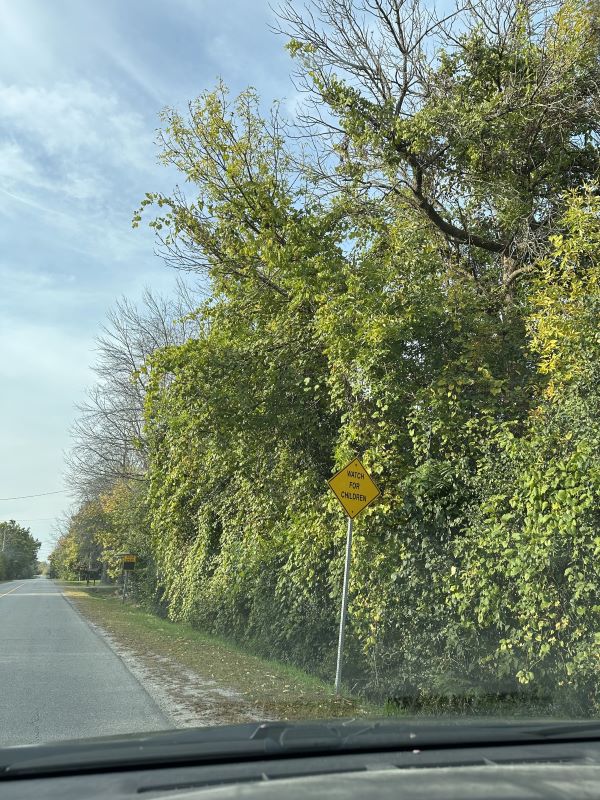by Fred Schueler, Fragile Inheritance Natural History
The trick in documenting ecological change is to anticipate what’s going to change before it begins to change. When we moved to Grenville County in 1978, we casually noticed that while grapes were common, they didn’t seem to go very aggressively up into the trees, but now it seems that a third of the roadside bushes and trees are swathed in cascades of autumn-golden grape foliage.

along CR 18 west of Kemptville.”
At the time, we supposed that it was cold winter temperatures that kept most of the grape vines down on bushes where they’d be covered with snow in the winter, but as concern about climate change increased, it was noticed in tropical forests that the growth of vines (called lianas) was enhanced by increased carbon dioxide concentrations, and now the google blurb on a search for this is “Climate change is postulated as an underlying driver of increasing liana abundances, via increases in dry-season length, forest-disturbance events, and atmospheric CO2 concentrations, all factors thought to favour lianas.”
Both of our other common woody vines have both ground-running and tree-climbing forms. The commoner form of Virginia Creeper, Parthenocissus vitacea grows mainly on the ground or only climbs into trees and shrubs weakly, but the less common – more southern – P. quinquefolia has well developed sticky cups at the ends of its multi-forked tendrils, and can climb the trunks of trees up into the canopy. Here, Poison Ivy, Toxicodendron radicans var. rydbergii, is rarely more than a ground cover, and it’s only along Pepperville Road, 3.1 km NNW of South Mountain, that we’ve seen it running 5 m up a Hydro pole with tree-like branches draped with berries, as the southern form, T. radicans var. negundo, does.
There are a dozen species of wild grapes in the eastern States, but ours are all Vitis riparia, the River Grape, though a few with larger fruit are hybrids with domesticated cousins from the southern species. Our Bittersweet, Celastrus scandens, twists itself only a few metres up into bushes, and is conspicuous only as isolated clusters of bright orange fruit, while the invasive Asiatic Bittersweet, Celastrus orbiculatus, already established in Ottawa, strangles whole trees in states south of here.
If temperature and carbon dioxide are going to inevitably increase, we should expect vines to become more aggressive – either by the spread of alien or southern forms or species, or by selection or growth responses in our native forms, as the River Grapes seem already to have done.







Note that the caption of the on-line photo doesn’t match the photo, but is for the photo in the printed newspaper. This photo is of Grapes swathing Buckthorn and trees along Craig Road west of Oxford Mills.